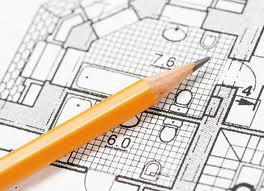Reflection: This is one of My technology assignment, I want to share the information to people who like to learn Technology in future. This assignment shows the pathways and careers of Technology, the pathways has Apprenticeship, college, and University, different pathways shows different careers. Also my assignment provide the daily activity of different careers, and different pathways.
Electrician
Apprenticeship
Daily activities
- Detect and test Equipment, Structures or Material – detect and test equipment, structures, or materials to identify to identify the errors or defects or the other problems.
- Communicating with people of outside of supervisors and peers- communicating with people who are outside of the company, and representing the company to customers, the government, the public, or others. The information can communicate by telephone or e-mail.
- Drafting and laying out for specifying technical devices, parts and equipment- provide documentation, detailed instructions, drawings, or detailed specifications to show others about how to fabricate, construct, assemble, modify, maintain, or used for the devices, parts, equipment, or structures.
- Help and care for customers, coworkers and others- providing personal help, medical attention, or emotional support to coworkers, or customers.
- Training and Teaching others- tech the educational needs of others, developing formal education or training programs, and instructing others.
- Repairing and Maintaining Mechanical Equipment- checking, Servicing, repairing, adjusting, and testing mechanical equipment, devices and parts for operate primarily on the basis of mechanical principles.
- Woking administrative activities- working for day-to-day administrative tasks, like plan, organize and complete the tasks.
- Resolving Conflicts with coworkers or consumers- dealing complaints, and solving disputes, and resolving conflicts or other ways negotiating with others.
- Explaining the meanings of the information to others- can understanding the means of the information, and then translating or interpreting the means of information and how it can be used to others.
- Recording information- entering, transcribing, writing or maintain information in the written or electronic form.
Pathways
To be accepted into program of electrician students need high school diploma, with courses in math, chemistry, physics, and English. Most electricians have to training through a 4 or 5-year apprenticeship, which combine in-school course training and on-the-job training. The program of electricians normally takes at a college or vocational school. Such as North American Trade Schools, students just need completed high school, and have a personal interview with school, and then students can get into school start the Electrical Technology Training. The required and elective courses you would take in the program of Electrician: Accounting, Applied Mathematics, Digital Communications, Electrical Networks, Safety and Semiconductor Devices.
When students completed their electrical apprenticeship training students can certify they are journeyperson electrician and they can carry out work by passing an exam which called C of Q and set by the provinces or country. Some electrician are worked for 5 years and have graduated from related high school, or apprenticeship training, they also can take that the C of Q certification exam.Certification to work in a trade in Ontario is named a Certificate of Qualification, it is C of Q. The legislation that regulates Industrial Electricians is the Apprenticeship and Certification Act. It is available through Training Division Apprenticeship office of vocational school or college. Electrician who pass this exam are awarded the Red Seal, which mean they are professional electrician and work in other provinces without having to re-certify.
Interior Designer
College
Daily Activities
- Before starting an interior design project, interior designer need meet with their consumers to get an idea of the consumer’s style for the space they want be designing and the budget. When the project is in progress, interior designers always meet with their consumers on-site to discuss the project’s design and progress.
- During the beginning of the design project, consumers and design need to come up with a budget for their design project. The budget will include everything of the design program need, such as pillows and candles. The interior designer must keep the consumer’s budgets not overspent, if it overspending they have to contact with consumers.
- Before starting the project working, interior designers need create inspiration boards to shows ideas of look they want to create for consumers. Using the fabric swatches and photographs, the boards to shows designer’s plans and give a visual image in consumer’s mind. The proceed of inspiration boards usually need written proposals.
- Interior designers always contact with vendors. They need spend time for shopping at such fabric or furniture stores for buy items to use for their projects. And sometimes the items has to be custom ordered, interior designers have to work with vendors to obtain.
- Research the products, e.g. fitting, furniture, lights, finishes, and dressings, and then provide samples for consumers.
- Interior Designers have to Work for detailed working drawings, designs, plans, models and schemes of your project, which are always using computer-aided design (CAD) software.
- Interior Designers need working with quantity surveyors to establish costs and manage time on larger projects, with architects, manufacturers, and contractors to determine the best way to use the space.
- Advise consumers on some factors by interior design, such as space planning, layout and utilization of furnishings or the equipment, and the color coordination.
- Collaborate with licensed practitioners in the areas of the technical, mechanical, electrical, and load-bearing design, which need required for regulatory approval.
- Interior designers have to relieve the stress of dealing with the vendors and take the responsibility if the consumers have problems. Interior designer have to overcome all obstacles.
Pathways
Interior designers need at least high school diploma with courses in Math, English, Visual Arts, Computers, Drafting and Design, and Housing Studies. For the first step to being a certified designer is to finish an accredited college interior design program. For Bachelor of Interior Design of Humber College, the admission requirements need Ontario Secondary School Diploma (OSSD), Grade 12U English (ENG4U) with a minimum grade of 65%, Any Grade 11 or Grade 12 U or M Mathematics with a minimum grade of 60%, and four Grade 12 U or M courses in addition to those listed above, with a minimum 65% overall average. Three year Interior Design advanced diploma graduated are eligible for advanced standing which are in the Bachelor of Interior Design degree program. The most things students have to learn in college are instruction in the history of design, sustainable design, lighting, drafting, colour theory, computer-assisted design (CAD), and general business and marketing practices.
Secondly, students must acquire the certain amount of entry-level experience under supervision of a qualified interior designer; and the approximately 6 to 7 years of education and work experience is generally needed.
Finally, to being a certified interior designer is to pass a certification exam, the National Council for Interior Design Qualification (NCIDQ) which is the recognized examination throughout North America. The NCIDQ examination test an applicant has the knowledge of interior design and experience in order to create interior are not just aesthetically pleasing, it also are safe and functional. The Canadian Decorator Association (CDECA) is the most influential Association representing decorators in Canada. CDECA is a professional and not-for-profit association, which is representing students, accredited decorators, designers, and affiliate business across Canada. ARIDO is the only self-regulatory professional association for interior designers in Canada, and it also is the largest professional association of interior designers in Canada. ARIDO is to serve the interests of the public and the interior design industry. ARIDO is through registering interior designers who meet an established standard of education, experience and examination. After passing the exams, interior designers must have an acceptable of full-time work experience.
Architect
University
Daily Activities
- Communicate information and ideals to manufactures and suppliers. And Contact and coordinate suppliers and manufactures when the materials meet some problems.
- Prepare drawings and specification document for making drafts, layouts and designing the plan and making scaled drawings of project.
- Prepare information and organize work of design, color, structure specifications, estimated costs, materials, equipment, and construction time.
- Prepare and present feasibility reports and design proposals to the consumers. And check the project form beginning till end to make sure all the specifications of design, quality and consumer’s need.
- The architect will working with various computer programs and building designs as proposals for the customers, generally using a computer-generated sketching program called Computer-Assisted Design and Drafting (CAAD) to create blueprints.
- Architect need always checking the progress of project, to make sure that the project is running on time and to budget.
- Resolving the all problems that occur during construction. When architect will work with contractors, and construction managers to obtain permits, answer questions regarding the plan of project or solve the problems as they arise.
- Understanding of construction materials, architectural documentation, and communication techniques are critical to this process. It is important when architect working at utilize various software programs during the design and documentation process.
- For larger projects, architect will put work out to tender, selecting a contractor and manager and leading cross-functional teams.
- On the large projects, architect may monitor and check work and equipment on-site.
Pathways
To be accepted into program of architect you need high school diploma, math, architectural history and theory, construction methods, and building design. Bachelor’s degree programs take about 4 years to complete, while master’s degree programs can range from 1 to 4 years in length. For Laurentian University, architecture program is 4 years degree, the admission requirements includes Ontario Secondary School Diploma (OSSD), Grade 12 English (ENG4U), two 4U math courses, and minimum average of 75% in top six U or M courses. Degree program of master are only available to students who are a bachelor’s degree in architecture or related subject.
To become a licensed architect, you need get the right education and work experience, and pass the professional exam. Most complete a bachelor’s or master’s degree in architecture. Other way to becoming an architect by enrolling an apprenticeship program with the Royal Architectural Institute of Canada (RAIC), that program approximately 10 years of courses. When you finish your education, you must working for about 3 years under the supervision of a licensed architect and passing a professional exam.
The Ontario Association of Landscape Architects (OALA) is a self-regulating processional association. the OALA is governed by an elected and appointed Council includes 15 members representing full members, the educators from the Universities of Guelph and University of Toronto, represent their universities and the general public though the lay councillor. The Ontario Association of Architects is a self-regulating organization governed by the Architects Act, which is a statute of the government of Ontario devoted to promoting and increasing the knowledge, skills and proficiency of the members and the administering the Architects Act is toward that the public interest may be protected and served.






